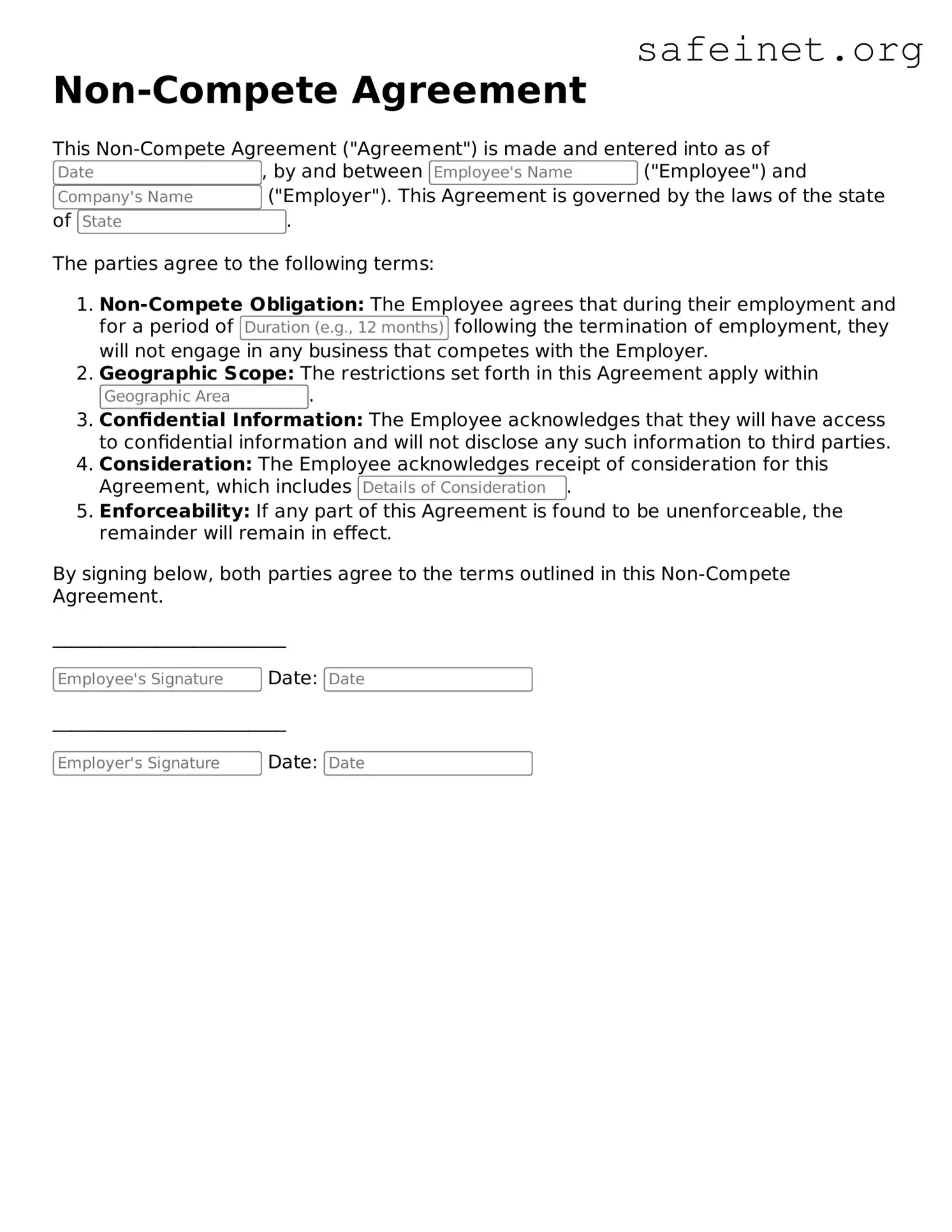What is a Non-compete Agreement?
A Non-compete Agreement is a legal document that restricts an employee from working for competitors or starting a similar business for a certain period after leaving their current employer. It aims to protect the employer's confidential information, trade secrets, and competitive edge in the market.
Why might an employer require a Non-compete Agreement?
Employers use Non-compete Agreements to safeguard their business interests. By limiting an employee's ability to join competitors, they can help prevent the loss of sensitive information and maintain their market position. This can be especially crucial in industries where specialized knowledge is key to success.
What are the common terms included in a Non-compete Agreement?
Typical terms in a Non-compete Agreement include the duration of the restriction, the geographic scope, and the specific activities prohibited. For example, an agreement may restrict an employee from working in similar roles within a specific radius for one year after employment ends.
How long does a Non-compete Agreement typically last?
The duration of a Non-compete Agreement can vary significantly. Generally, it lasts from six months to two years. Courts tend to favor shorter durations that are reasonable and necessary to protect the employer's interests.
Are Non-compete Agreements enforceable?
Whether a Non-compete Agreement is enforceable depends on state laws and the specifics of the agreement. Some states enforce them strictly, while others may impose limitations. Courts often consider the reasonableness of the terms when determining enforceability.
Can an employee negotiate a Non-compete Agreement?
Yes, employees can negotiate the terms of a Non-compete Agreement before signing. It's important to discuss any concerns regarding restrictions, duration, or scope. Negotiation may help reach a more balanced agreement that protects both parties’ interests.
What should an employee do if they violate a Non-compete Agreement?
If an employee believes they have violated a Non-compete Agreement, it is advisable to consult a legal professional. Understanding the potential consequences and options is crucial. Some violations may lead to lawsuits or restraining orders from the employer.
Can an employer enforce a Non-compete Agreement after employment ends?
Yes, an employer can enforce a Non-compete Agreement after an employee has left the company, provided the terms are reasonable and compliant with state laws. Employees may face legal action if they engage in prohibited activities during the specified time frame.
What alternatives exist to Non-compete Agreements?
Alternatives to Non-compete Agreements include Non-disclosure Agreements (NDAs) and Non-solicitation Agreements. NDAs focus on protecting confidential information, while Non-solicitation Agreements prevent employees from soliciting the company's clients or employees post-employment.
